Festivals celebrated in Indian culture form a kaleidoscope of vibrant traditions, uniting diverse communities through shared joy. Encompassing a rich tapestry of religious, cultural, and seasonal observances, these festivals exude a dynamic energy that resonates across the nation. With roots deeply embedded in ancient rituals and beliefs, Indian festivals serve as poignant reminders of heritage and spirituality.
These lively occasions bring families, friends, and even strangers together, fostering bonds and igniting a collective sense of belonging. From the exuberance of Holi’s color-soaked revelry to the solemnity of Diwali’s illuminated symbolism, each festival weaves a unique narrative that reflects India’s multifaceted identity.
The active engagement and fervor surrounding these celebrations transcend geographical boundaries, transcending time to bridge the gap between past and present, tradition and modernity. As India continues to evolve, its festivals remain a timeless embodiment of unity, culture, and the enduring spirit of togetherness.
1. Diwali
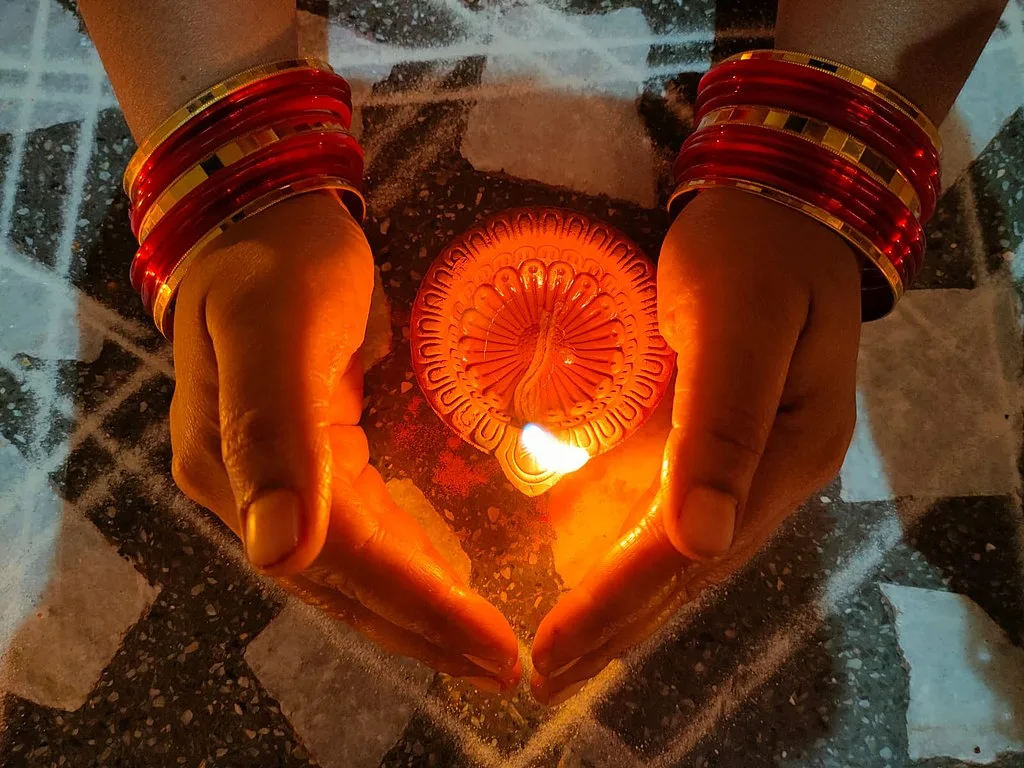
Diwali, often referred to as the Festival of Lights, holds profound significance as it symbolizes the triumph of light over darkness and good over evil. Celebrated by Hindus, Jains, and Sikhs, Diwali typically falls in autumn. During this joyous occasion, homes are adorned with colorful oil lamps (diyas) and intricate rangoli designs, casting a warm glow that represents the victory of knowledge and virtue. Families come together to exchange sweets and gifts, and communities gather for grand feasts and spectacular fireworks displays.
The festival also honors the goddess Lakshmi, who is worshipped for prosperity and well-being. In essence, Diwali is a time of renewal, reflection, and unity, fostering a sense of togetherness and shared values.
2. Holi
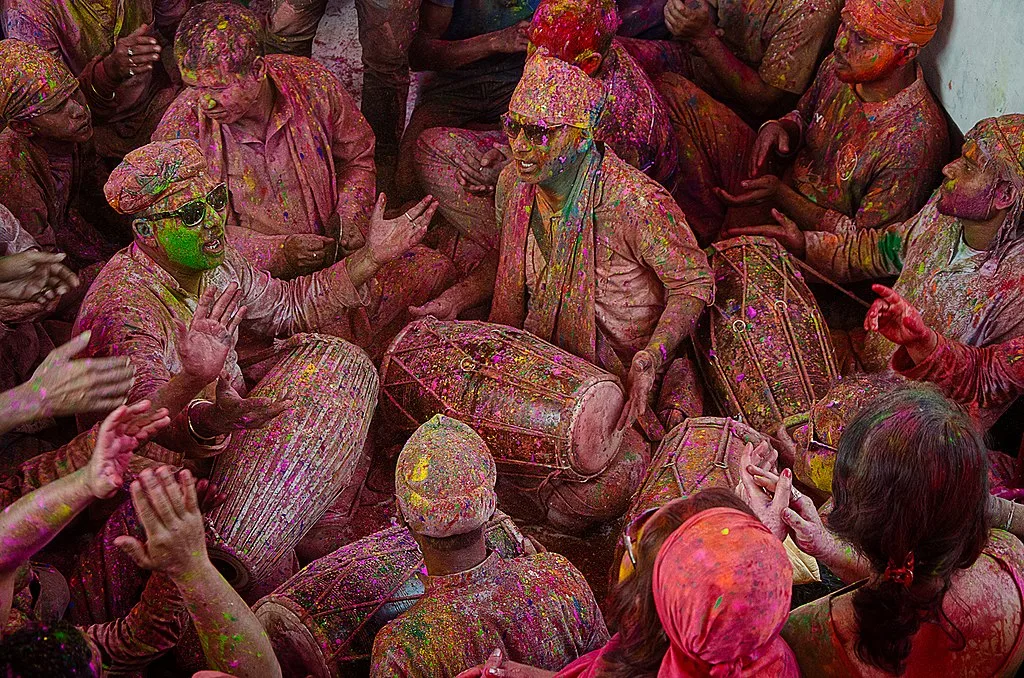
Holi, the vibrant Festival of Colors, holds cultural and social significance as it welcomes the arrival of spring and the blossoming of nature. Celebrated across India with exuberance, people of all ages come together to play with colored powders and water, fostering a sense of unity and harmony. This lively festival signifies the victory of good over evil and the end of winter. Reviving relationships and bridging divides, Holi encourages a spirit of forgiveness and togetherness.
Traditional sweets and drinks are shared, and joyous music and dancing fill the air, creating an atmosphere of unbridled merriment. The festival showcases the boundless enthusiasm of the Indian people and the power of colors to break down barriers and promote shared joy.
3. Eid al-Fitr
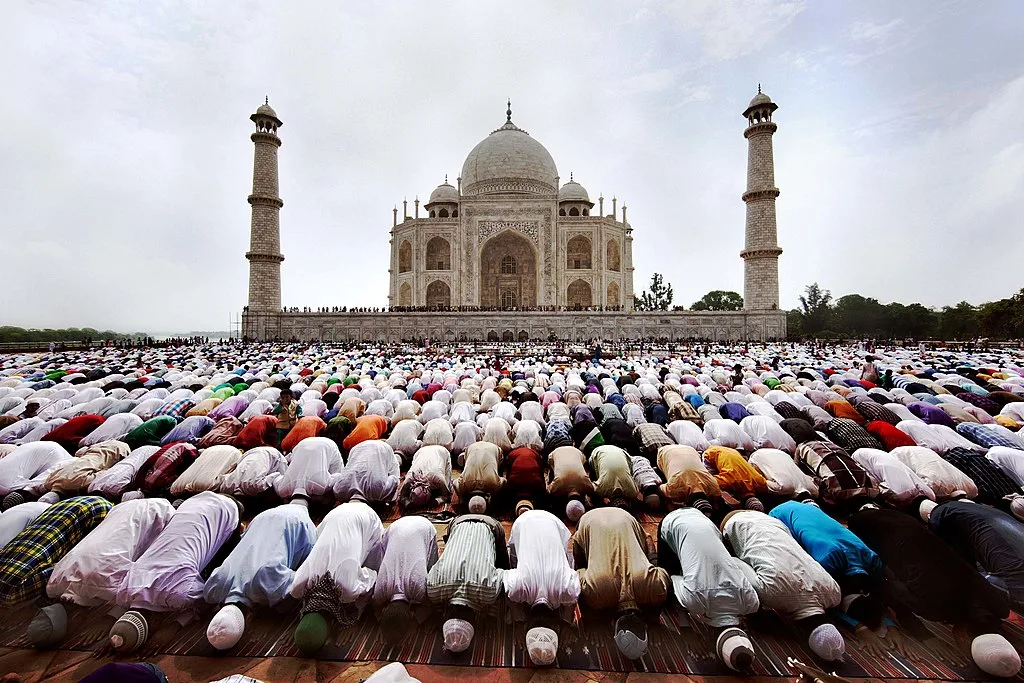
Eid al-Fitr holds deep religious significance as it marks the end of Ramadan, the holy month of fasting observed by Muslims worldwide. Muslims come together for communal prayers, expressing gratitude for spiritual growth and self-discipline during the fasting period. The festive atmosphere is enhanced by giving zakat (charity) to those in need, ensuring that all members of the community can join in the celebrations.
Families and friends gather to share special meals and exchange gifts, fostering a sense of unity and compassion. Eid al-Fitr underscores the values of empathy and generosity, reinforcing the bonds of kinship and community among Muslims.
4. Eid al-Adha
Eid al-Adha, commonly known as Bakra Eid, commemorates the willingness of Ibrahim (Abraham) to sacrifice his son as an act of obedience to God’s command. Muslims around the world participate in special prayers and rituals, including the symbolic sacrifice of an animal, which is then shared with family, friends, and those less fortunate.
This act underscores the values of selflessness and compassion, highlighting the importance of sharing one’s blessings with the community. Beyond its religious significance, Bakra Eid reinforces the principles of humility, empathy, and sacrifice in the lives of Muslims.
5. Christmas

Christmas, celebrated by Christians in India, is a time of immense joy as it commemorates the birth of Jesus Christ. This festive occasion is marked by church services, where the story of Christ’s birth is retold, and carol singing fills the air. Homes and public spaces are adorned with colorful decorations and twinkling lights, creating a magical atmosphere. The exchange of gifts symbolizes love and generosity, reflecting the spirit of Christ’s teachings. Families gather for special feasts, sharing traditional dishes and sweets. Christmas in India is a time of spiritual reflection, renewal, and spreading love and goodwill among all.
6. Navaratri
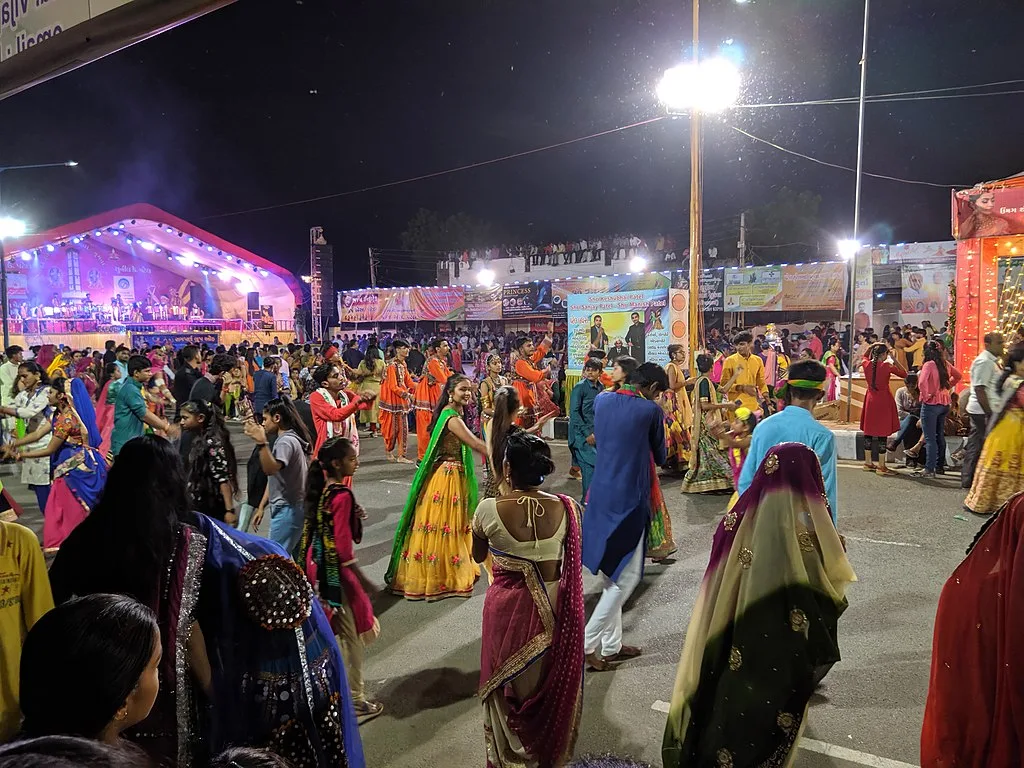
Navaratri, a spiritually significant nine-night festival, reveres the goddess Durga and her divine attributes. Hindus across India engage in lively celebrations through dance, fasting, and devotional singing. Each night, intricate rituals and vibrant performances pay homage to different manifestations of the goddess, fostering a deep connection with the feminine energy.
The festival promotes unity and the triumph of good over evil, culminating in the exuberant dance form known as Garba or Dandiya Raas. Devotees adorn themselves in colorful attire and gather in communal spaces to participate in these dances, creating an atmosphere of joy and devotion.
7. Durga Puja
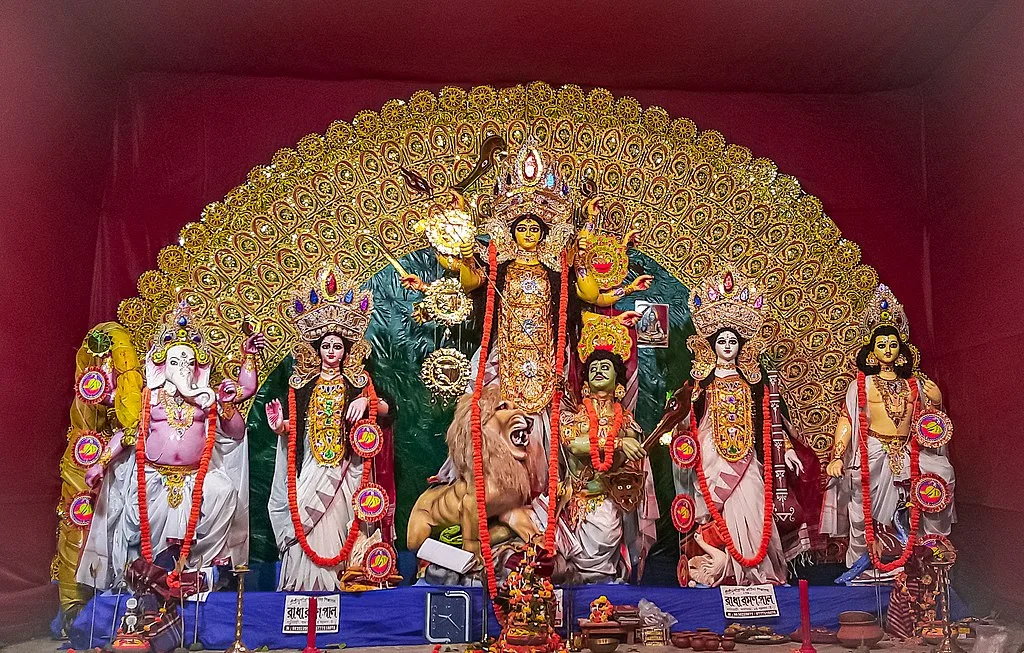
Durga Puja, a paramount celebration in West Bengal, honors the powerful goddess Durga’s victory over the demon Mahishasura. Elaborate pandals (temporary structures) house awe-inspiring artistic depictions of the goddess, while processions, music, and cultural performances fill the air with excitement.
The culmination of the festival involves immersing Durga idols in water bodies, symbolizing her return to her divine abode. This grand affair fosters a sense of community and creativity, allowing people to express their devotion and artistic talents.
8. Ganesh Chaturthi
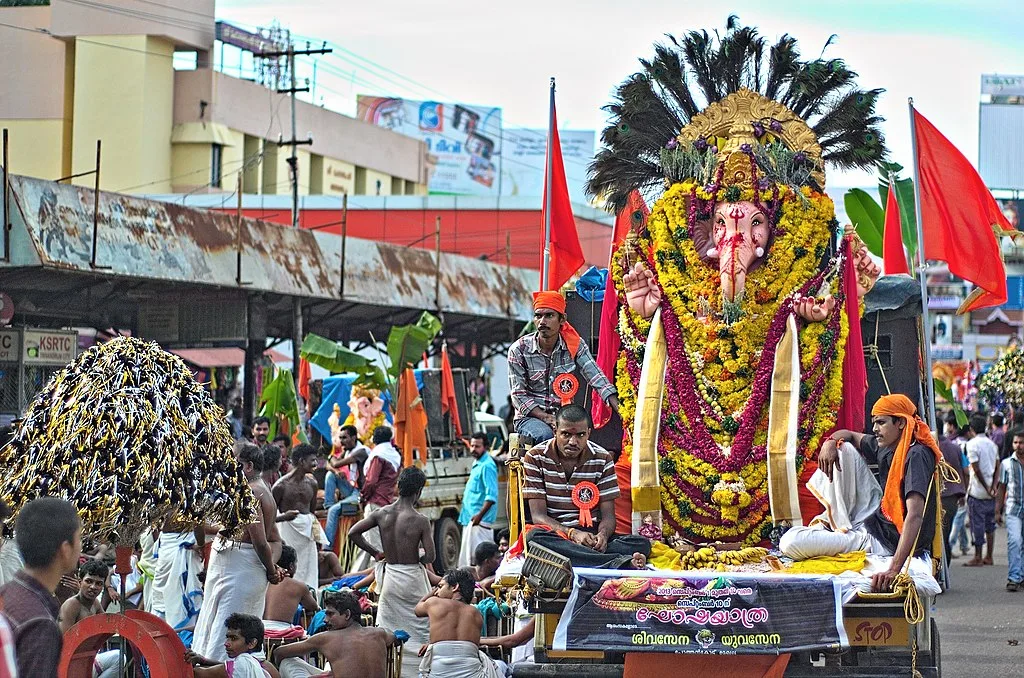
Ganesh Chaturthi, a cherished occasion, venerates the beloved elephant-headed deity Ganesha, symbolizing wisdom and prosperity. Families welcome Ganesha into their homes by installing elaborately crafted idols. The festival involves daily prayers, rituals, and offerings, accompanied by lively processions that lead to the immersion of Ganesha idols in rivers or the sea. This act signifies the deity’s return to his celestial abode. The festival promotes unity and devotion while encouraging environmental awareness, as efforts are made to use eco-friendly materials for idol creation and minimize water pollution during immersion.
9. Pongal
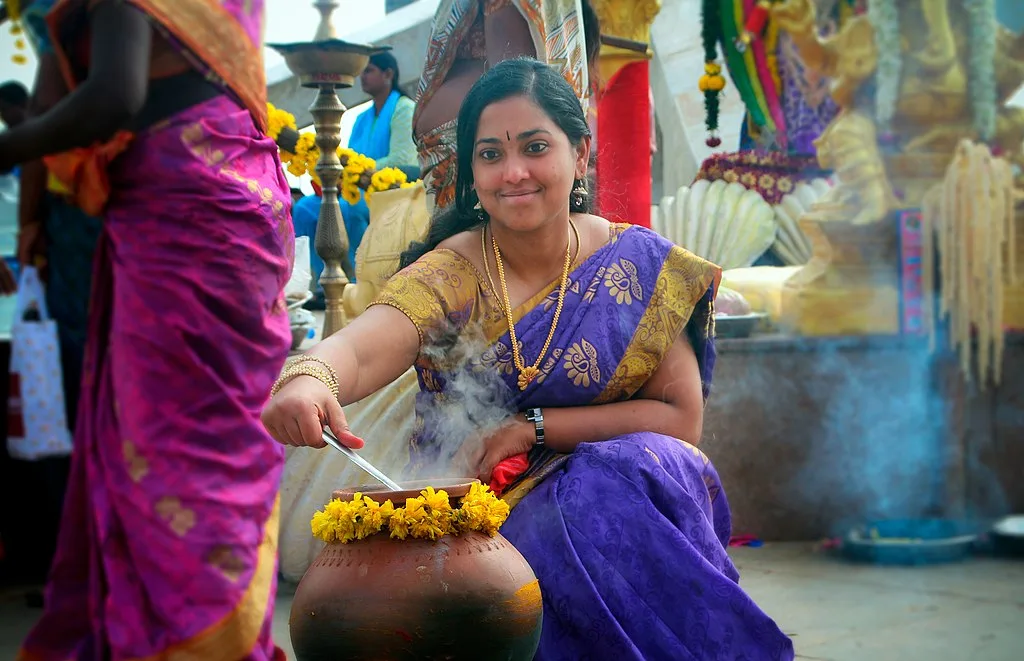
Pongal, a prominent South Indian harvest festival, holds immense cultural and agricultural significance. Celebrated typically from January 14th to 17th, it marks the transition of the sun into the zodiac sign of Capricorn, symbolizing the end of winter and the onset of longer days.
During Pongal, homes come alive with vibrant decorations, and families gather to prepare the eponymous dish, “Pongal,” using freshly harvested rice and lentils. This special sweet dish is cooked in earthen pots and allowed to boil over, symbolizing prosperity and abundance. Sugarcane, turmeric, and other crops are also offered in gratitude for nature’s bounty. Cattle, integral to farming, are adorned and worshipped as a sign of appreciation for their contribution.
Pongal fosters unity, as families and friends come together to share meals, exchange gifts, and revel in the festivities. Pongal is a reflection of South India’s rich heritage, emphasizing the importance of nature, gratitude, and communal harmony.
10. Onam
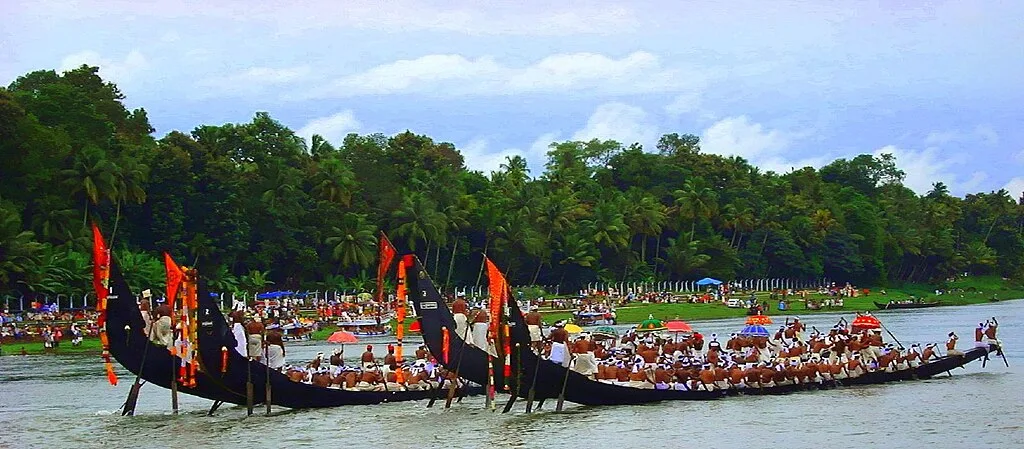
Onam, Kerala’s cultural extravaganza, rejoices in the harvest and the legendary return of King Mahabali. People decorate their homes with intricate floral rangoli designs, called pookalam, and indulge in a sumptuous feast known as Onam Sadya.
Vibrant cultural performances, including the traditional dance form of Kathakali, captivate audiences. The grand boat race, Vallamkali, adds excitement as beautifully adorned snake boats glide through waterways. Onam encapsulates the spirit of unity, cultural richness, and the harmonious coexistence of tradition and modernity.
11. Lohri
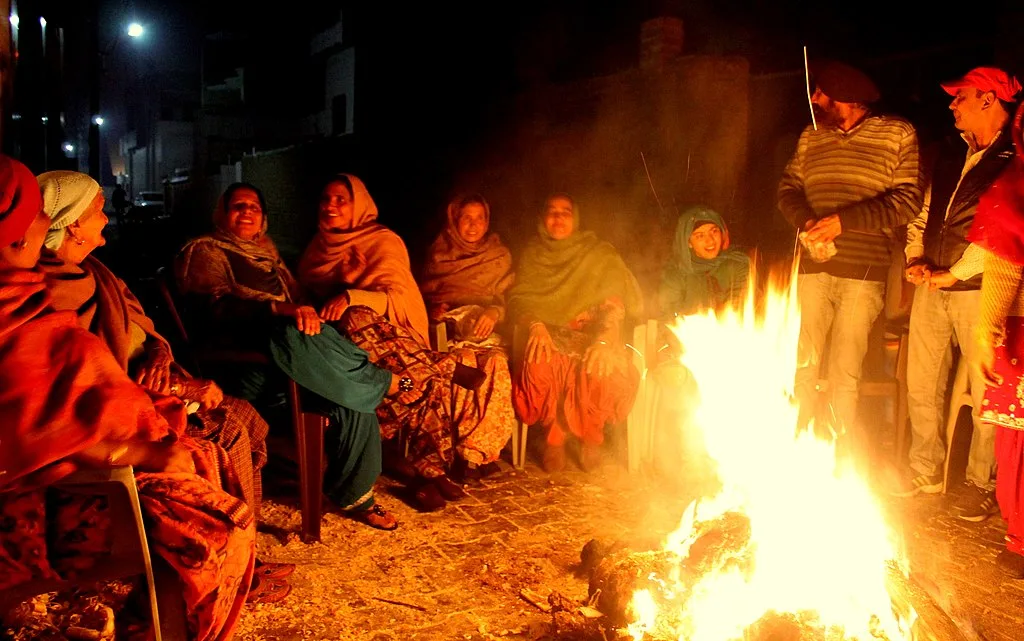
Lohri, observed predominantly in North India on January 13th, encapsulates cultural and seasonal significance. Coinciding with the winter solstice, Lohri is a spirited celebration marked by the illumination of bonfires. Families, friends, and neighbors gather around these fires, sharing joyous moments, singing folk songs, and engaging in traditional dances. These bonfires symbolize the triumph of light over darkness and the extended daylight hours that follow the solstice.
Lohri fosters a sense of unity within communities, strengthening social bonds as people come together to embrace the warmth and collective spirit.
12. Raksha Bandhan
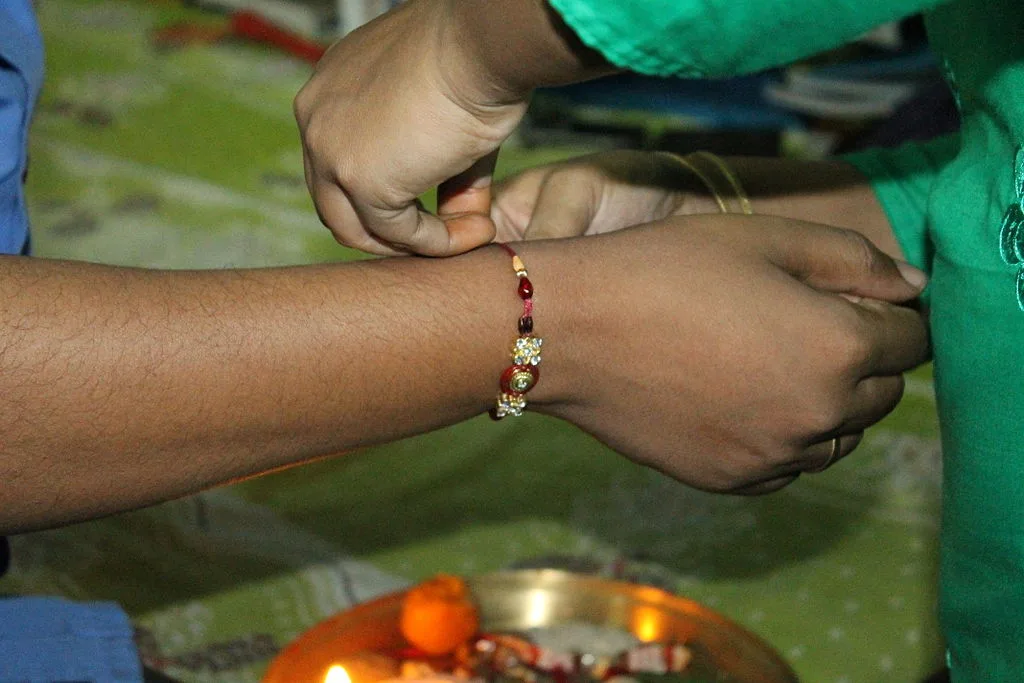
Raksha Bandhan, a deeply rooted festival celebrated across India, holds profound emotional importance. Observed on the full moon day in August, sisters lovingly tie sacred threads (rakhis) around their brothers’ wrists, signifying protection and affection. Brothers, in return, offer gifts and pledge to safeguard their sisters’ well-being. This cherished tradition reinforces the strong sibling bond, transcending distances and time, and reflecting the enduring essence of familial relationships.
13. Janmashtami
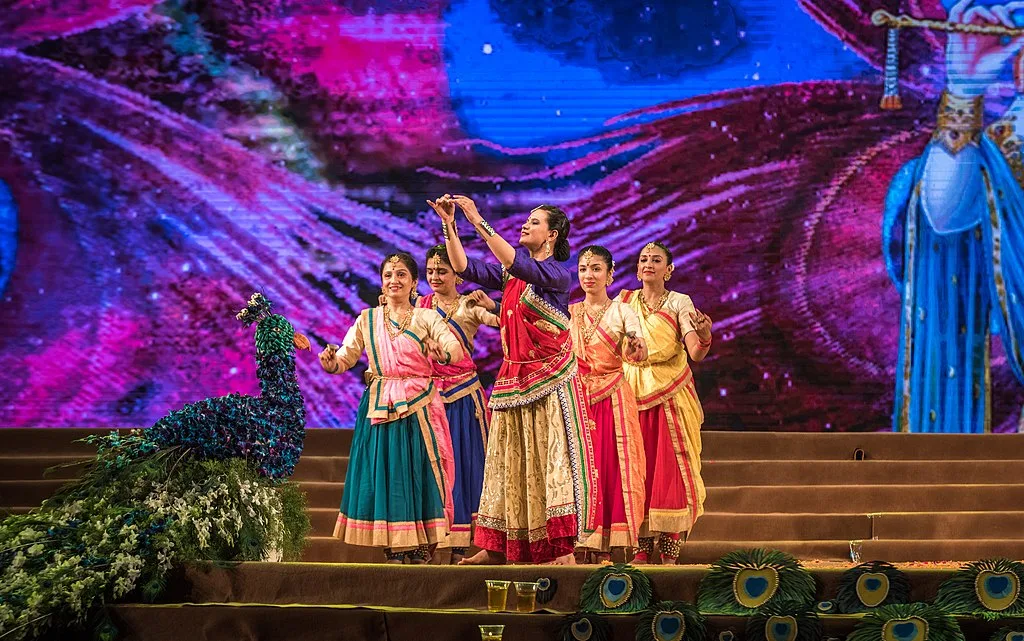
Janmashtami, celebrated in August, reverberates with spiritual fervor as it commemorates the divine birth of Lord Krishna. Devotees prepare for the occasion with fasting and prayers, then come together to engage in soul-stirring bhajans (devotional songs) and enact scenes from Krishna’s life. The midnight hour, when Krishna is believed to have been born, witnesses ardent prayers and devotional fervency, fostering a deeper connection with the revered deity.
14. Mahashivratri
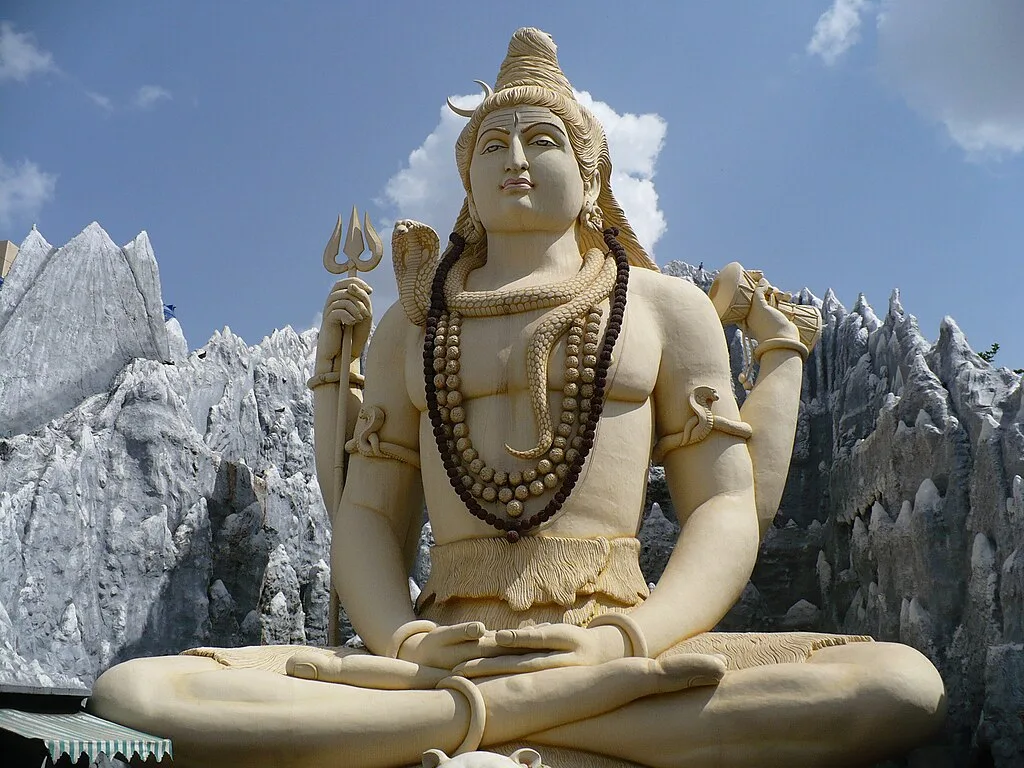
Mahashivratri, dedicated to Lord Shiva, holds immense spiritual significance. As the name suggests, this “Great Night of Shiva” is marked by fasting, meditation, and intense prayers. Devotees seek Lord Shiva’s blessings for inner strength and liberation, engaging in a nightlong vigil. The festival underscores the profound aspects of self-purification and spiritual awakening, encouraging followers to transcend earthly limitations.
15. Baisakhi
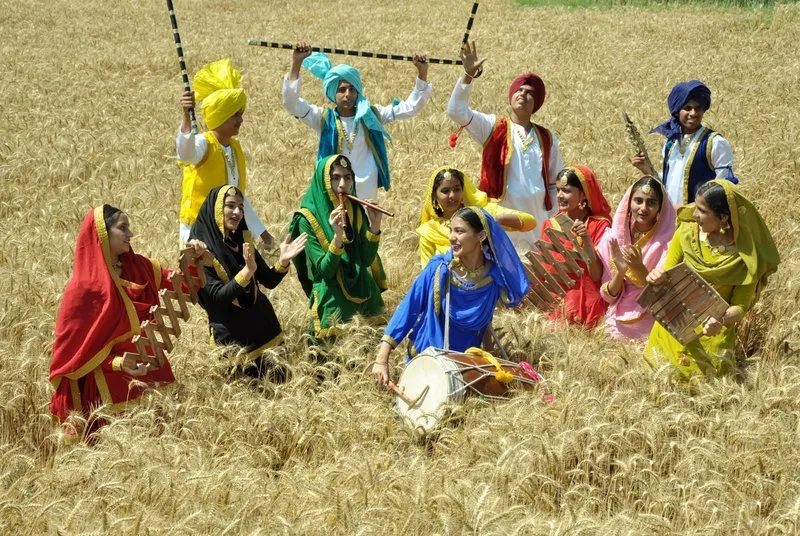
Baisakhi, celebrated on April 13th, radiates both agricultural abundance and religious fervor. Signifying the harvest season, it carries special importance for Punjab’s farming community. On this day, people express gratitude for the bountiful crops through prayers and processions.
For Sikhs, Baisakhi is doubly significant, as it also commemorates the formation of the Khalsa, a pivotal event in Sikh history. Festive processions, joyful cultural performances, and visits to gurdwaras create an atmosphere of shared faith and vibrant unity. Baisakhi embodies the spirit of togetherness, resilience, and cultural heritage, resonating deeply with the hearts of the people.
16. Navroz
Navroz, the Parsi New Year, holds significant cultural and spiritual meaning for the Parsi community. This joyful occasion, also known as “Jamshedi Navroz,” marks the arrival of spring and the renewal of life. Families come together to prepare sumptuous feasts filled with traditional dishes, symbolizing abundance and prosperity. Special prayers are offered, expressing gratitude for blessings received and seeking divine guidance for the year ahead. Cultural events, including music, dance, and performances, add to the festive spirit. Navroz represents a time of unity and togetherness, fostering a strong sense of belonging among Parsis.
17. Chhath Puja
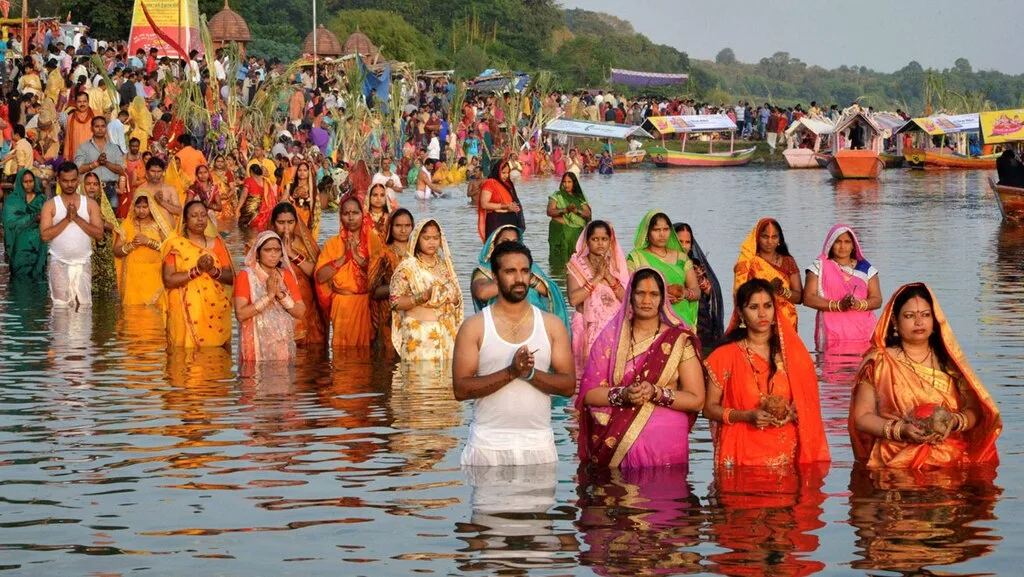
Chhath Puja, an ancient Hindu festival, is a vivid expression of reverence for the Sun God, a symbol of life and energy. Devotees observe rigorous fasting and immerse themselves in the cleansing waters of rivers or ponds during sunrise and sunset. The rituals include making offerings of fruits, flowers, and traditional sweets. Chhath Puja not only celebrates the Sun’s life-giving power but also deepens the connection between humans and nature, emphasizing gratitude and humility.
18. Buddha Purnima
Buddha Purnima, also known as Buddha Jayanti, holds profound importance in the Buddhist calendar. It commemorates the birth, enlightenment, and passing away of Siddhartha Gautama, who later became known as Buddha. Devotees engage in acts of merit, such as meditating, offering prayers, and performing acts of kindness and charity. Monasteries and temples are adorned with colorful decorations, and devout Buddhists come together to reflect on Buddha’s teachings of compassion, wisdom, and enlightenment.
19. Mahavir Jayanti
Mahavir Jayanti, a significant Jain festival, celebrates the birth of Lord Mahavira, the 24th Tirthankara of Jainism. Devotees gather at temples, engage in prayers, and participate in processions that carry statues of Mahavira. The festival emphasizes the core Jain principles of non-violence (ahimsa), truth (satya), and non-possessiveness (aparigraha). Acts of charity and kindness are encouraged, reflecting Mahavira’s teachings of selflessness and spiritual evolution.
20. Vishu
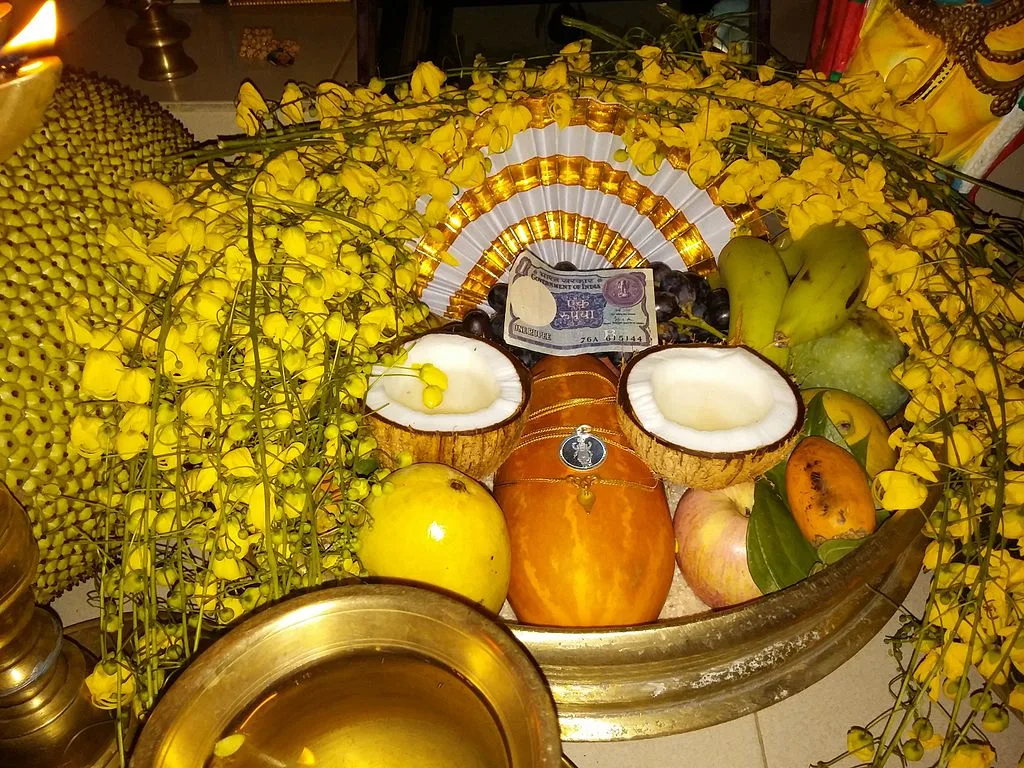
Vishu, the Malayalam New Year, is a time of vibrant celebrations in Kerala. The highlight is the “Vishu Kani,” an arrangement of auspicious items like rice, fruits, flowers, and gold, displayed in front of deities. Families wake up early to witness the Kani, which is believed to set the tone for the coming year. Traditional feasts, known as “Vishu Sadya,” are prepared with an array of delectable dishes. Cultural performances, including the captivating “Vishu Kani Kazhcha” and traditional games, enhance the festive atmosphere. Vishu embodies the spirit of new beginnings, cultural heritage, and the shared values of the Malayali community.
Conclusion
In essence, festivals in Indian culture are vivid expressions of unity, faith, and heritage. They bind communities, transcend boundaries, and foster a profound sense of belonging. With each celebration, people actively engage in time-honored traditions, reinforcing their connection to the past while embracing the present.
These dynamic gatherings exemplify the power of collective joy and reflection, weaving a colorful tapestry of rituals, art, and spirituality. As the vibrant mosaic of Indian festivals continues to evolve, it serves as a testament to the enduring spirit of togetherness and the indomitable vitality of a culture that thrives in its celebrations.
